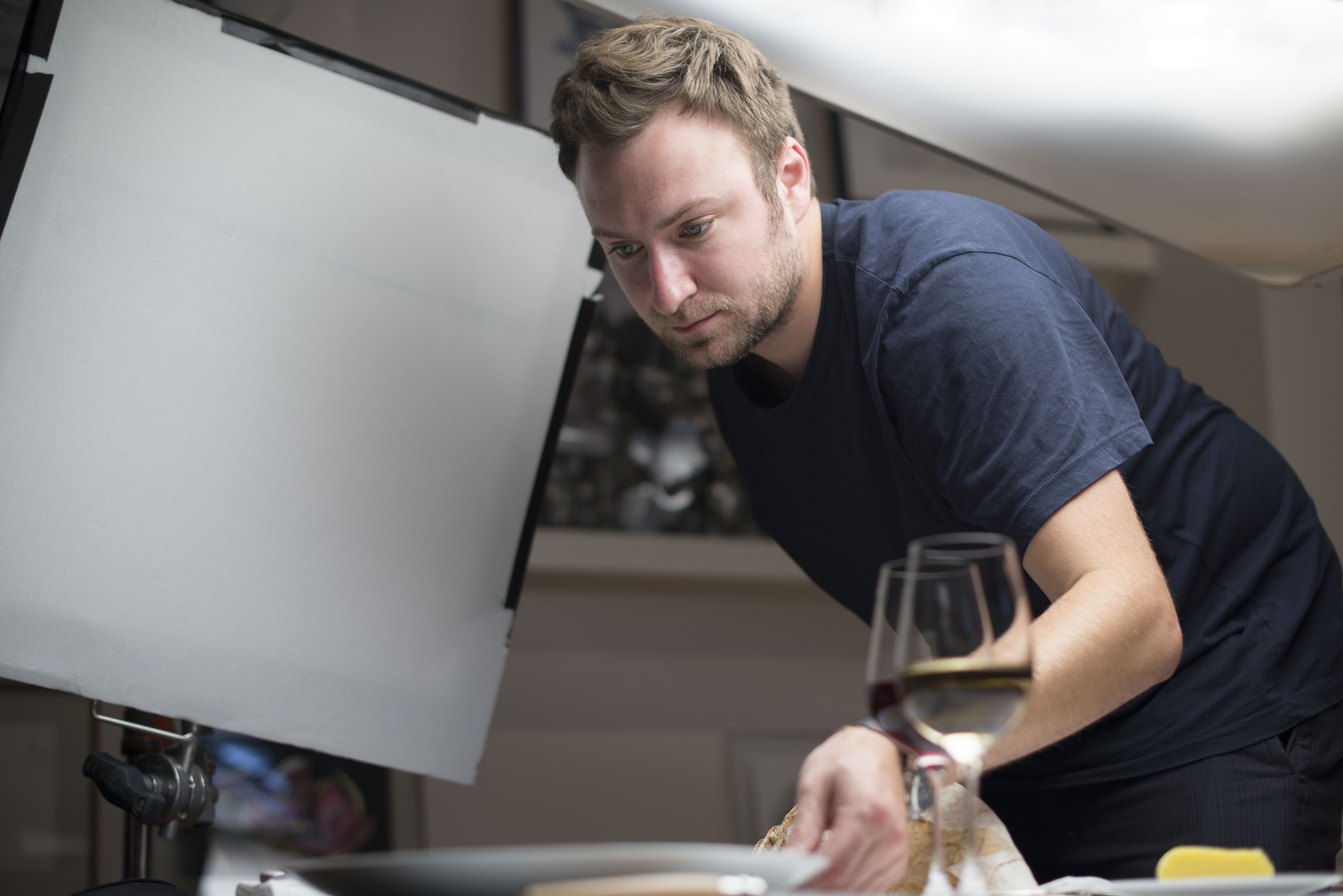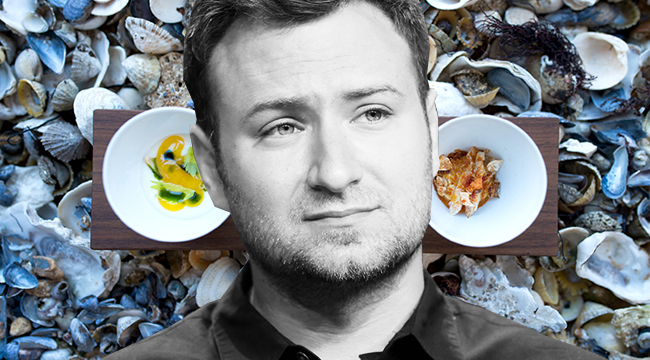
David Gelb upended the food documentary genre when Jiro Dreams of Sushi hit screens around the world in 2012. The documentary took the high cinematic values of nature shows like BBC’s Planet Earth and blended that with a deep cultural and familial story built around executing the perfect dish. Gelb, a graduate of USC’s film school, was visionary in this approach, and it’s changed perceptions of what food documentaries can be.
Jiro Dreams of Sushi had a small theatrical run when it came out, but it really caught fire when newly-minted (at the time) streaming service Netflix picked up the film. It was a smash hit for the service. So, Gelb, his production team, and Netflix sat down to figure out a way to keep telling human stories about food. From this, the show Chef’s Table was born. And in the same way that Jiro shifted documentary story-telling, Chef’s table has changed the way we watch and think about food on TV.
We were lucky enough to catch up with Gelb and his crew on a recent trip to Berlin — where the Culinary Cinema section of the Berlinale was premiering the latest volume of Chef’s Table for the world. Bread was broken. Cocktails were shared. And after the dust from the whirlwind film festival settled, we jumped on a call with Gelb to talk about how the show is made, what it’s like being parodied by Documentary Now!, and where we should draw our lines in the sand over food appropriation.
Let’s go back to Jiro Dreams of Sushi. That is an iconic food documentary that set the food documentary world on fire. What inspired you to make that film?
In film school, and the years following film school, I was watching quite a bit of documentary. I was a big fan of the BBC series Planet Earth, as well as the works of Errol Morris.
You know, what Errol Morris and Planet Earth kind of have in common is this really cinematic approach to documentary filmmaking. It’s well edited and uses the entire arsenal of cinematic tools, including beautiful music. Planet Earth was the same way. It was essentially a nature documentary with a really cinematic look to it. I wanted to apply that to food.
I thought the stuff that I was seeing on TV had a very kind of reality show feeling. None of it had that cinematic appeal. So that was the first instinct: How can we make food feel beautiful and cinematic?
How did that then lead to Jiro Ono?
I narrowed my focus to my favorite food which is sushi. I wanted to make a film about a number of different styles of sushi by different chefs. But when I met Jiro Ono through the food writer Masuhiro Yamamoto, who’s also featured in the film, I just realized that this was a great story about a person and about a family.
Through that character, we convey what we wanted to about sushi and about the art of sushi. We wanted to do it in a style that was elevated in the same way that Jiro was elevating the way that his sushi appeared, the way that it tasted. We wanted to do the same thing to the craft itself. We wanted to make a beautiful, cinematic, character-driven story about a guy, his family, his philosophy, and way of life.
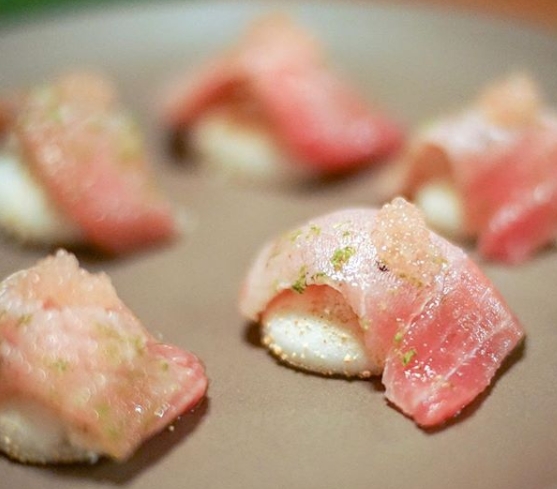
I really dig that. How did you parlay that into Chef’s Table over at Netflix?
Well after Jiro, we — myself and my creative partner Brian McGinn who I met in the immediate aftermath of Jiro — were looking at a way to continue that style of storytelling with other chefs and with other characters. There are so many interesting chefs with fascinating stories to tell.
We had a reasonably successful theatrical run, but still very small. When Jiro Dreams of Sushi hit Netflix, we found that our social media was blowing up. There’s a lot more attention. So we thought that maybe Netflix would be interested in more of these types of films in a new show format. At the time, Netflix had no original documentary series. So we were the first ever original documentary series. They really were willing to take a chance of us.
How so?
While every other food show was quite celebrity-driven — you know, with the hosts and stuff — our show was kind of unprecedented in that we let the chefs tell their own story.
Right. So you started out with Chef Massimo Bottura in the first episode. At the time he’d already been working for 20, 25 years in his restaurant and had a pretty big following. He was already in the World’s 50 Best. What was your process of going to him and getting him to do the show?
Massimo had seen Jiro Dreams of Sushi and was interested in having a film made about him. He’s a storyteller. He has a message that he wants to share.
Though our show was unknown, the pedigree of Jiro Dreams of Sushi was attractive to him. We were very fortunate that he was willing to open his doors to us. We shoot quite a bit longer than any other food show, at least at the time. So, we were quite moved by his generosity. And the same with all the chefs in the first season.
How much time is it?
It takes about two weeks to shoot an episode. Even though our show was brand new, it was a new format, and they were all willing to give us the time and candor and sincerity to really reveal their stories and give us the time to do it properly.
That’s fantastic. Now that you’re seven volumes in, how has your process changed in sourcing chefs and making episodes? Or is it the same?
It’s a similar process that it’s always been which is essentially listening, reading, and exploring. Whenever we’re on location shooting, we’re also visiting other places. We’re getting feedback from chefs. We’re getting feedback from food writers. We’re readings articles and essentially trying to find stories that are unique and that haven’t been told before. Stories that are diverse, both in the ethnicities and the styles of cooking that we’re covering.
Our first two seasons were very focused on high-end restaurants. We thought, ‘okay, let’s look at restaurants that are trying to do the absolute best of something and sparing no expense.’ And that makes for an interesting story. But, we found that there are incredibly moving human stories on all levels of the restaurant world. So, every season we want to make it eclectic. We want it to be at all different types of restaurants, with all different types of people, all over the world. We’re trying to show how it’s a small world but it’s also a large world with lots of different types of people and different types of food.
But, the passion is the same. Chefs are generous and they’re trying to share an idea. They’re trying to share a plate. They’re trying to start a conversation at their table. And that’s happening all over the world. So, that’s part of our focus now.
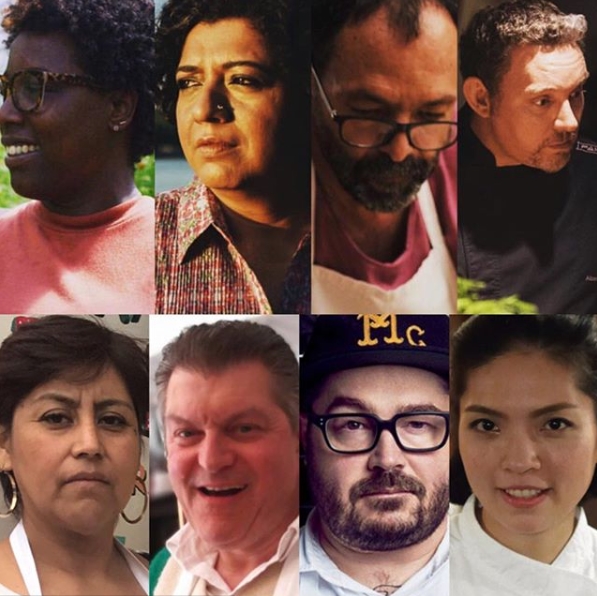
That’s very evident in the last couple of seasons of the show. Shifting a little, I find it interesting that when you make touchstones like Jiro and Chef’s Table, you open yourself up to criticism and parody. I have to ask, did you get a chance to see the Documentary Now!‘s parody of Jiro with Fred Armisen, ‘Juan Likes Rice and Chicken?’
Oh yeah.
And… What did you think?
I consider that to be the greatest professional honor of my life.
If you look at Documentary Now!, it’s the greatest and most iconic documentaries being parodied by two of the creative comedic geniuses of our time. I mean, it’s awesome. I was incredibly moved.
How did you hear about it?
I’d heard rumblings that they were doing something because their producers were calling our cinematographers and crew members trying to figure out exactly how we made the show so that they could basically parody it. I think it’s hilarious and quite funny. And actually, it’s quite moving within the story that they created.
Their story is a story of succession as well but set in Columbia. It’s quite hilarious and, also, really touching. We were thrilled. First, just the fact that people are watching things that I’m making is awesome. If people want to criticize it or parody it, I consider all of it just awesome because people are watching. If they’re inspired to parody our show I consider that the ultimate flattery, to be honest.
It’s kind of like getting the Weird Al treatment, isn’t it?
Absolutely.
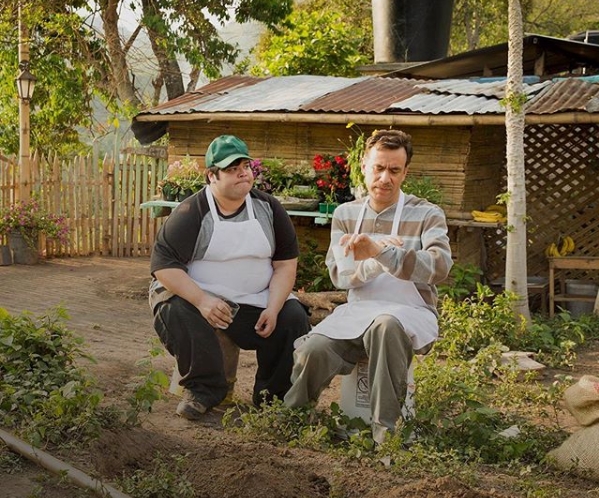
Shifting back to food, do you feel that food is becoming more accessible through shows like Chef’s Table? Some critics say that these places become more inaccessible because they become so popular that it’s harder to get a reservation, etc. I kind of lean the other way in that exposure is a good thing. Where do you fall?
I think that it makes sense on different levels. So, specifically, we have made probably getting into Massimo Bottura’s restaurant a lot harder. I think that’s true of almost all of the chefs that we profile. We are making the story accessible because you can watch these chefs on Netflix in, like, 109 countries. The consequence is that everybody wants to go to these specific places.
I think the positive is that it’s setting a higher aspirational bar. The chefs are creating role models on all different levels that will allow for food culture to proliferate. More people will care about food. They’ll want better food. And that demand will allow chefs to open restaurants that will be successful. More people will eat out and hopefully try new things.
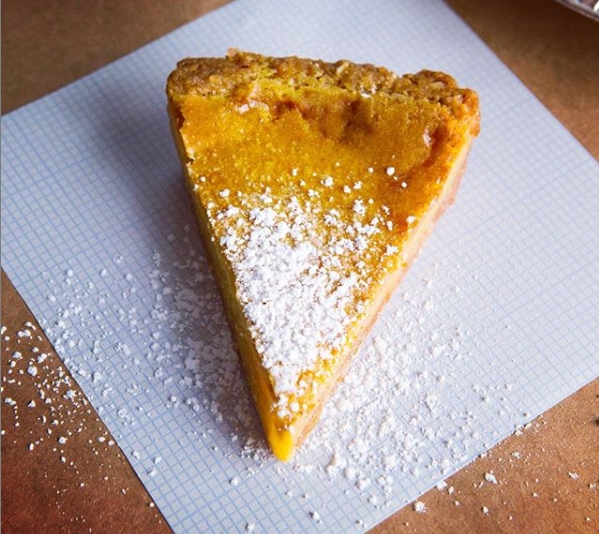
As a food writer in 2019, I’m always wrestling with the idea of food appropriation that aligns with cultural appropriation. The line always seems to be moving as to what those terms mean. Watching the recent installments of Chef’s Table — with Cristina Martinez and Asma Khan specifically — it seemed that the truth lies in someone telling their own story through food.
Sure.
Do you think that the “story” is the be-all and end-all, or is there more of a journeyman aspect? Many cooks, chefs, etc. are just trying to make money, get by, and live life. I feel like I don’t need to get mad because a white kid’s making burritos in Portland. But a lot of people get mad about that.
I think it’s rooted in respect. You have to approach it with respect and not arrogance. It’s okay to follow your passion as a chef. But don’t go saying that … I’m trying to think about how to delicately do this … don’t take a cultural food and then say that, “Oh I’m doing it better.”
Right.
You can do your own twist on it. But, I think, it’s a matter of curbing your arrogance, treating that food with respect, and treating the origins of that food with the proper respect.
I think it’s a delicate thing. I think that chefs should be respectful of the origins of the food, of the styles of food that they’re approaching. That’s really all I can say, I think.
Right. For me, if I’m going out for a bowl of noodles, I want somebody from Taiwan or Japan to be making those noodles. There’s a deep tissue knowledge there. But somebody from Chicago’s probably going to make just as good a bowl of noodles if they really love it and respect it. So why can’t we have both and just be happy with good food?
I’ll tell you the example that comes to mind is Ivan Ramen. Ivan Orkin wasn’t like, “Oh, I’m going to read a book and just figure out how to make ramen noodles. I’m just going to open a bunch of restaurants in the US and say that I’m a ramen master.”
He went to Japan and he went about it in the right way. He learned about it from masters and he really immersed himself in the culture. Then he put his own twist on them with the roasted tomato on top to add another layer of umami. So, he was actually adding something to the culture in Japan while coming from a place of ultimate respect.
Exactly.
And so I think that’s the right way to do it. Tokyo is considered one of the greatest food cities in the world. I think it has the most Michelin stars, but that’s a cross between all different types of cuisine. Because Japanese chefs, they travel too.
If they’re going to become a pizzaiolo, they go to Italy. They learn it from a true pizza master and then they bring it home and add their own flourish to it. But they’re always going to the country, immersing themselves in the culture, really learning about the actual foundational pillars of that cuisine, and treating it with the ultimate respect. That’s the way to do it.
